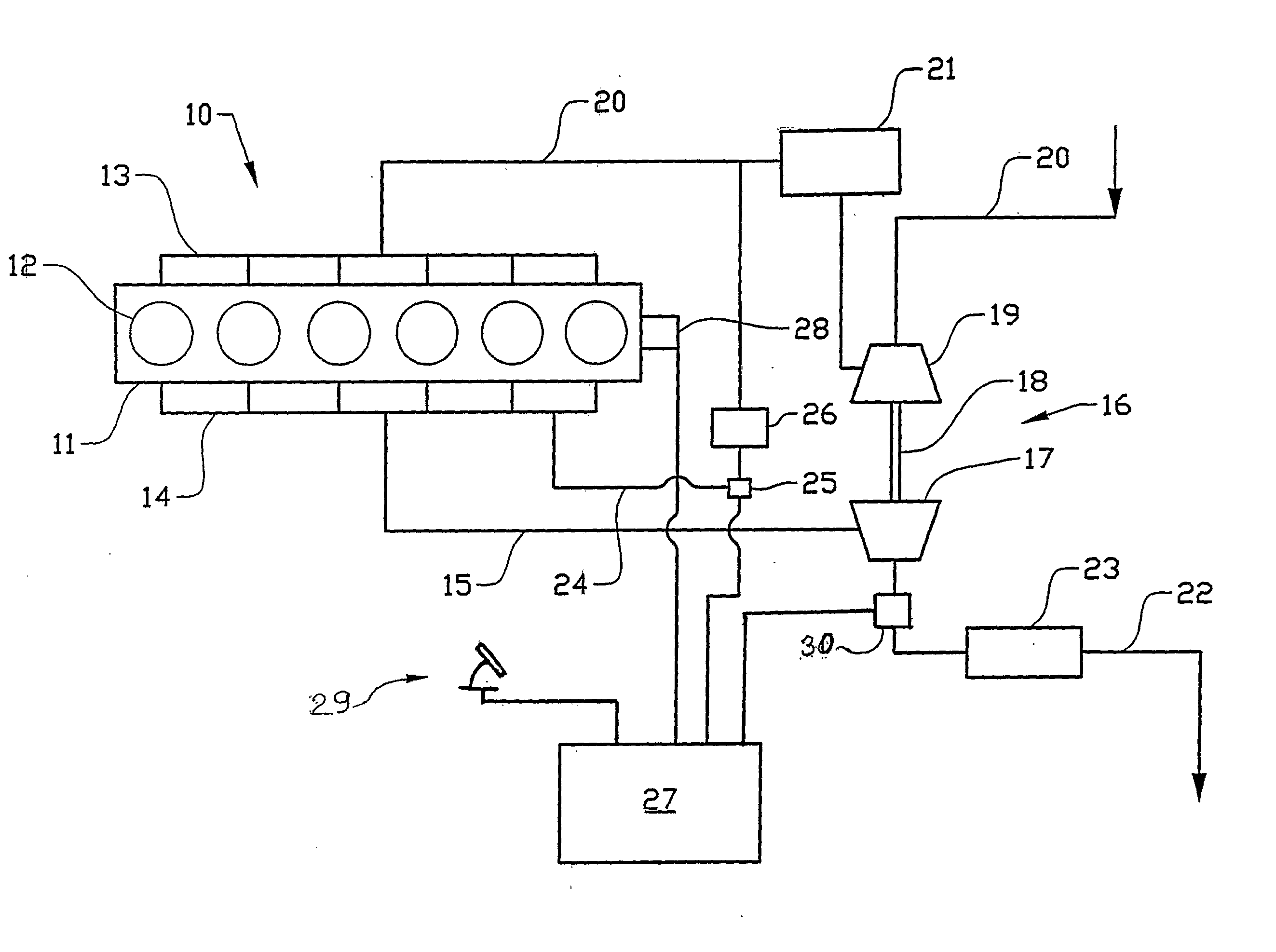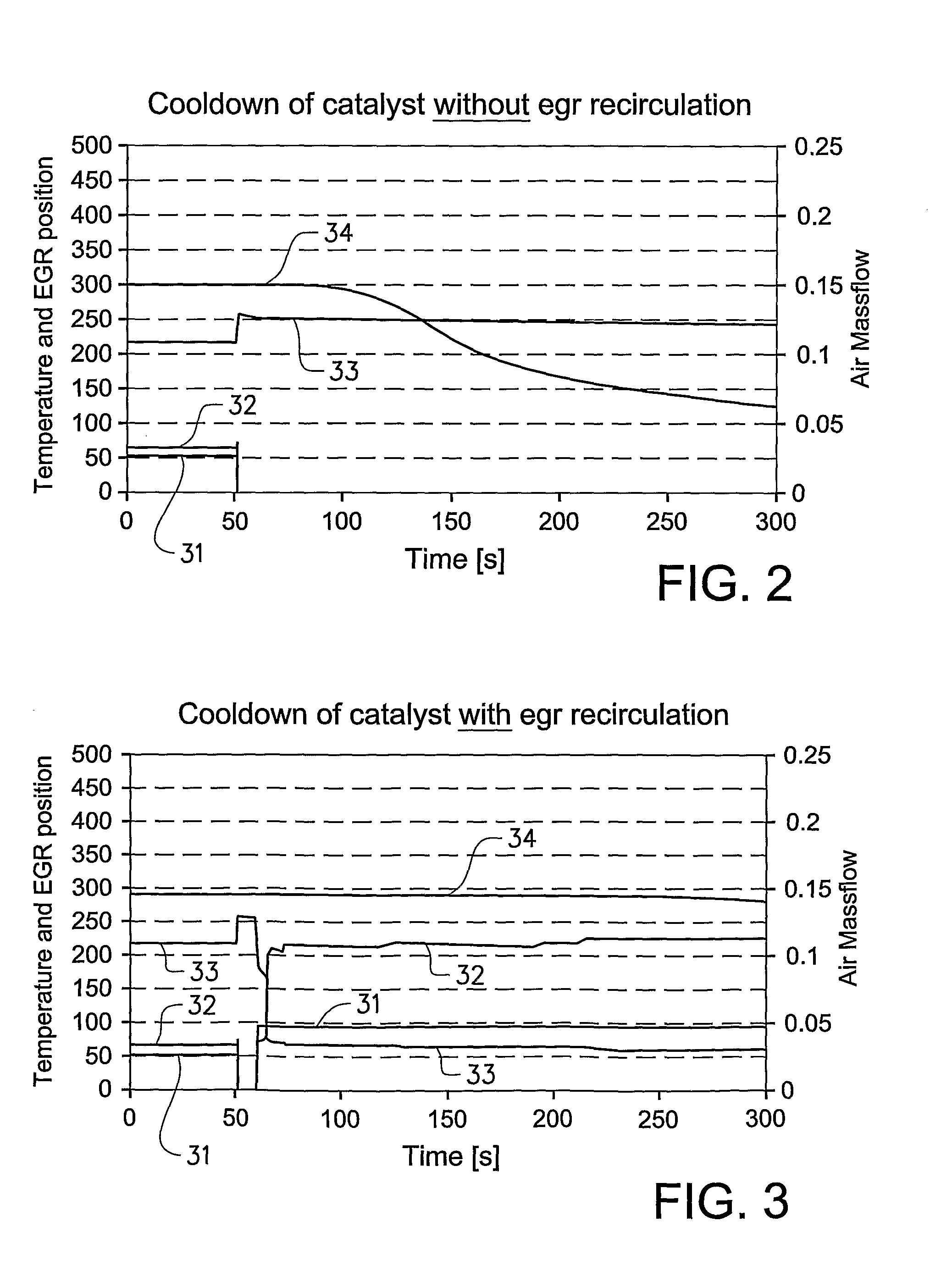Method for Internal Combustion Engine With Exhaust Recirculation
- Summary
- Abstract
- Description
- Claims
- Application Information
AI Technical Summary
Benefits of technology
Problems solved by technology
Method used
Image
Examples
Embodiment Construction
[0011]The internal combustion engine 10 shown in schematic representation in FIG. 1 is used in a vehicle, for example a truck or a bus, and comprises an engine block 11 comprising six piston cylinders 12, with an intake manifold 13 and an exhaust manifold 14. The exhaust gases are led via an exhaust pipe 15 to the turbine wheel 17 of a turbo unit 16. The turbine shaft 18 drives the compressor wheel 19 of the turbo unit, which, via an induction pipe 20, compresses incoming air and conveys it via a charge-air cooler 21 to the intake manifold 13.
[0012]Fuel is fed to the respective cylinder 12 via injection devices (not shown).
[0013]Exhaust gases which have passed through the turbocharger 16 are led onward to the atmosphere via the exhaust pipe 22, which leads the exhaust gases through an exhaust aftertreatment device, for example a particle trap or a catalyst 23. For example, regeneration of a particle trap can be achieved by the oxidation of unburnt fuel in a catalyst which is placed ...
PUM
 Login to View More
Login to View More Abstract
Description
Claims
Application Information
 Login to View More
Login to View More - R&D
- Intellectual Property
- Life Sciences
- Materials
- Tech Scout
- Unparalleled Data Quality
- Higher Quality Content
- 60% Fewer Hallucinations
Browse by: Latest US Patents, China's latest patents, Technical Efficacy Thesaurus, Application Domain, Technology Topic, Popular Technical Reports.
© 2025 PatSnap. All rights reserved.Legal|Privacy policy|Modern Slavery Act Transparency Statement|Sitemap|About US| Contact US: help@patsnap.com



